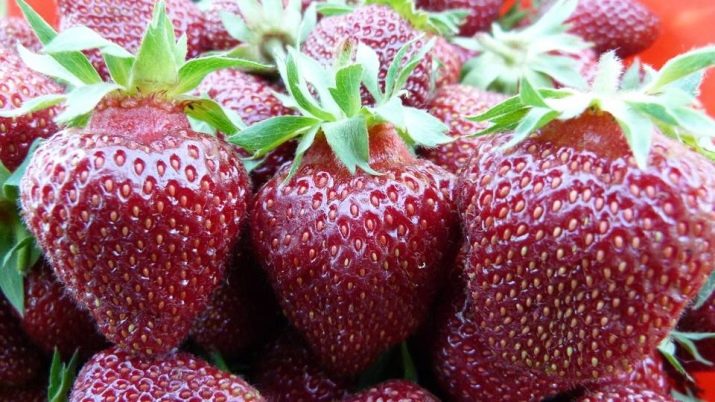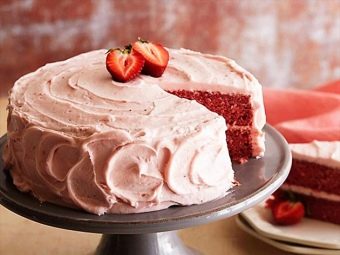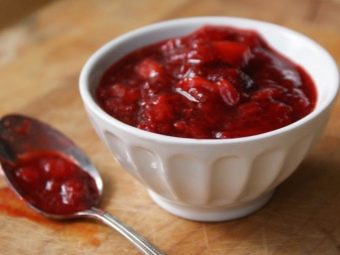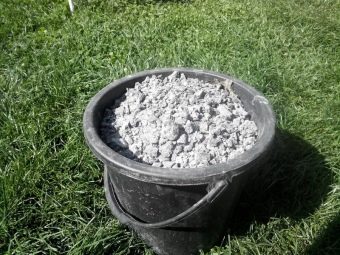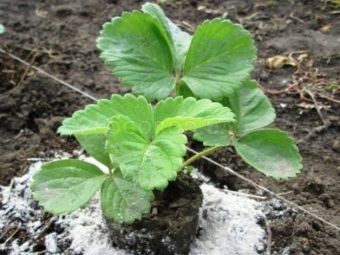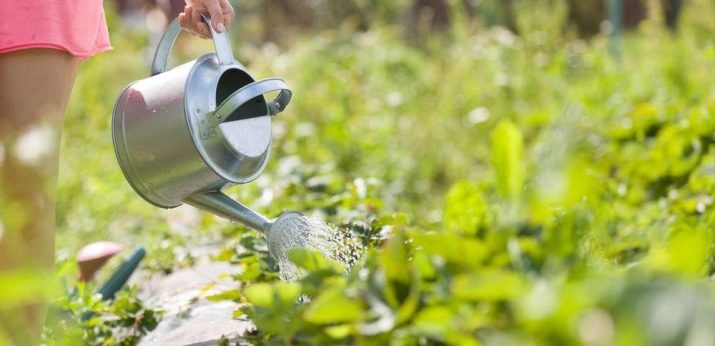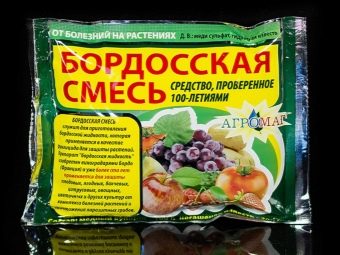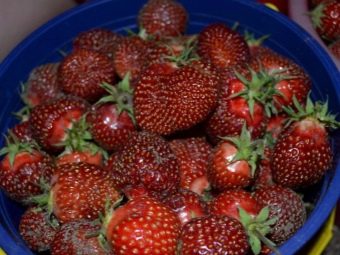Strawberry “Ruby Pendant”: variety description and cultivation
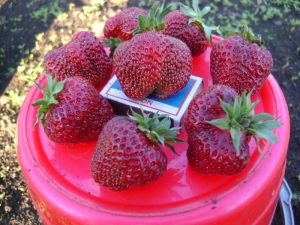
Strawberries, or garden strawberries, as they are otherwise called, are fragrant and tasty berries that many gardeners grow on their plots. Due to the simplicity in the care of many, even novice gardeners is easy to grow it.The main thing is to decide on a variety that I would like to see in my garden plot, because there are a lot of them, and each has its own differences and peculiarities in care. For some, strawberry pendant strawberry has become a favorite species. To understand what attracts this particular berry, you need to become more familiar with this variety.
Features of culture
To find out all the details of the care and cultivation of strawberry "Ruby Pendant", you need to study the description of the variety. Many reviews of summer residents say that it is suitable for the quality of the fruit.
The variety is considered mid-season, well opposed to various diseases, and the harvest is enough to eat plenty of berries to a large family.
The bush grows medium in size and not too spreading, gives little leaves, but it has strong roots, gives an active mustache.
The berry is not very large, but you can’t call it small either - it usually does not reach more than twenty grams. The shape of the berries is elongated with a slightly pointed tip, the color is red saturated both outside and inside. Taste berries sweet with a pronounced strawberry flavor.
Berry usually does not lose its attractiveness for a long time both on a bush and in a torn form, it is well kept and is not afraid of transportation. This grade is suitable for the fresh use, preparation of jam, jams, compotes.
The harvest, though quite high, is not enough to use this variety for industrial purposes, but for home use it fits perfectly.
How to plant and grow?
Bushes are planted in places with neutral soil, may be slightly acidic. The distances between the plants are left within thirty centimeters, and a little more is possible if the space allotted for strawberries allows this.
After planting bushes need to ground the ground - cover with dry grass or special synthetic material purchased in the store. Someone does not. But the benefits of mulching are very large. If you do not hold it, then you have to deal with weeds that grow very quickly, and also water and loosen the ground more often. When mulching, weed growth stops, the earth retains moisture longer, and the earth under the mulch "breathes" without crusting. Another plus is that with heavy rains, the bed remains clean and the berry too. But if the earth is covered not with natural mulch, but with artificial material, the rain will not penetrate inside, so you will need to take care of drip irrigation.
If there is not enough space on the plot, and there is no possibility to plant strawberries on separate beds, you can place it in large pots, and even build vertical beds. It will grow everywhere and feel comfortable, and in addition, it will decorate the garden if it is properly placed.
For strawberries to grow well and produce fruits, it needs additional nutrition, most importantly, potassium and phosphorus. The very first time it needs to be fed with nitrogen, usually these fertilizers are applied in early spring. After a short period of time, the bushes need to be fed with humus.
Fresh manure and mineral fertilizers will be optimally abandoned so that the plant does not begin to actively “work” on the foliage, but leaves strength for flowering and fruit formation. Wood ash will be a good helper for strawberries.
The first dressing is made after the snow melts and sustained warming, the second is needed after the first crop is harvested, and the third - in the fall, when the plant is prepared for winter.
If strawberries are grown in cold regions, and during its flowering a sharp decrease in temperature is expected, care must be taken to ensure that it does not freeze: cover overnight, and remove film during the day.
Strawberries are constantly growing mustache, but they need to be cut, do not feel sorry for them. You need to leave the largest, and then, when the plant leaves. With their help, the plant will then multiply. All other mustaches are removed because they will draw strength from the main plant.
When the fruit picking is over, the left mustache should be lightly prikopat ground. After a couple of weeks, it will be clear that the bush has taken root, and you can safely cut it off from the main plant. Next year it will be a plant that should give a harvest.
"Ruby pendant" refers to remontant varieties. Therefore, over the summer and autumn you can get two full harvest - at the beginning and at the end of the season. The first crop ripens in June, and this variety fruits until late autumn.
Strawberries of this variety endurely tolerate both wet and arid weather. But at the same time, if the weather is dry and hot, you should not forget about timely watering, watering each bush well once a week. To prevent the plant from over-wetting and not over-drying, you just need to monitor the condition of the soil.
In the same place strawberries can be grown for three, maximum four years. Then the place must be changed. If this is not done, the berries will be small, and the harvest will decline year by year. Mustaches from the most productive and strong bushes transplanted in the fall. By spring, the plant will get stronger, gain strength, and in summer it will yield.
For winter, bushes need to be prepared according to the rules. All bad and dried leaves cut off, leaving a few young ones. Before the onset of winter you need to make feeding. Cover plants well, so that they do not freeze. As mulch is good to use, sawdust, dry leaves, conifer needles.
"Ruby pendant" is resistant to diseases and pests, but for the prevention of bushes need to be treated Bordeaux liquid. This is done in the spring before the appearance of flowers and in late autumn before preparing for winter.
Gardeners reviews
Summer residents speak very well of this variety. Many believe that the variety is unpretentious, and even if fertilizers are not made or when watering is not done in time, the plant will bear fruit.
But especially responsible gardeners recommend those who intend to seriously engage in the cultivation of strawberries, not to forget to feed, water and carry out preventive measures to combat pests. That is what can bring a good harvest and sweet berries. Many experienced gardeners believe that if someone complains about certain disadvantages of this variety, it means that they simply do not provide the necessary care for the berries.
They speak very well of the berry in the sense that it makes a magnificent, fragrant jam, which can make you happy all winter and remind you of a warm summer. In addition, the berry perfectly tolerates freezing and is stored in the freezer the whole winter. It does not lose its taste, and its taste remains the same sweet. Therefore, fresh berries can be eaten in winter.
Another advantage that gardeners are talking about is that berries are very easy to propagate.She gives a good mustache, which is well rooted. The main thing is to choose the right process and separate it in time.
Some gardeners choose this variety for an excellent opportunity to harvest in summer and autumn. Some attribute to the shortcomings that the harvest is not as high as we would like. But do not forget that this is a strawberry for home breeding, and for a family of this variety is enough. Berry, he just provide enough for more and jam.
On how to plant strawberries, see below.

